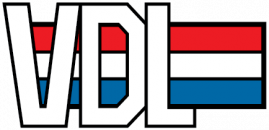Deze vacature is niet meer beschikbaar
Graduating at VDL ETS! Master students pay attention! We are looking for students who can do research on the total efficiency of the different energies we use to drive our buses/cars/trucks. From for example generating hydrogen to eventually running an e-truck or bus on this hydrogen. And how does this differ from other energies? Interested? Read on quickly and sign up!
Graduation project – Energy for Stationary and Mobility applications
Job Mission
The key of the a CO2 neutral economy is the STORAGE and the TRANSPORT of the in huge amounts available green energy all over the world. One easy way to reduce this problem is to try to make as much as possible self-sustaining applications. For such applications transport of energy is then partly solved but supply/storage/conversion of the somewhere else available energy becomes the next challenge. VDL want to increase its involvements of these new transition technologies in the market.
VDL already performed in 2019 a theoretical study how to store hydrogen (around 35 different ways) to optimize the storage part. By this study VDL wants to investigate the optimization aspects of the overall energy chain (from generation to supply up to consumption) which can be used for coaches, trucks, ships (mobility) and self-sustaining residential or industrial areas (stationary). The solution can differ for the mentioned applications. For example for green energy there are:
- Different ways of production (Sun panel’s, Windmills, Thermal Energy, Electrolysis, SSAS, …)
- Different ways of transport (Pipeline, Shipping, Mobile, Cable, …….)
- Different ways of storage (Battery, Pressurized H2, LH2, Cryo Compressed H2, Ammonia, MeBH4, LOHC, ….)
- Different ways of usage and conversion (Heat, Hydrogen (Fuel Cell or Burning) and Electricity)
Some aspects:
For two to three preferred system variants, VDL wants also wants to know the Well to Application efficiencies and Co2 footprint and this in comparison to petrol or gas. So including producing, transporting, converting (1 or more times) and using or re-using. Are some techniques better for local self-sustaining summer, winter energy storage systems and other better for mobility applications? How could it practically look like?
Job Description
- Try to make overview/ basic set up for two or three self-sustaining applications. For example:
- Coach (>500km) on green energy with its own refuelling/charging station. This refuelling/charging station also must be self-sustaining
- Residential area with summer winter variations. How to make, store and use the in the summer available energy in the winter
- Alternatively a Short-Sea vessel (1.0-1.5MW and 5-10 days trip range)
- Make a flow diagram, how such integral energy systems could look like
- Use a MathLab/Simulink model to calculate what is needed to make a self-sustaining Coach-refuelling/charging combination, a self-sustaining Residential area and a self-sustaining Short-Sea vessel
- Investigate if the location of the energy production in the world and type of transport influences the choices
- Look what kind of conversion and storage is the most optimal for the different applications
- Make an attractive overview of the selected two/three total systems
- Pro-Con’s including some economical aspects or concerns
- Recommend how to proceed. Can one expect earth-shattering developments in the next 5-10 years
- You weekly report and discuss your progress with your VDL supervisor.
Personal Skills and Experience
- You are in the final stage of your Master program
- Experience in literature studies
- Knowledge from MathLab/Simulink
- Abstract thinking, out-of-the-box thinking, analytical but still hands-on. Capable of implementing simple and practical solutions
- Effective communication with all levels and disciplines. Clear and structured way of reporting.
- Able to challenge others, to come up with even better ideas
- Team spirit and cooperative attitude
Job Attractiveness
- Contribute to the further development of state-of-the-art, high-tech transport solutions
- Dynamic working environment
- Ability to connect software development with mechanical development, production and test-environment
- You will be part of the international industrial family business, the VDL Group, where continuity is paramount
Interested?
Are you interested and do you meet the profile? Then we would like to receive your CV and motivation for this vacancy!
VDL Enabling Transport Solutions
VDL ETS focusses on research, development and testing of new concepts and technologies for transport-related activities within the VDL group. The objective is to develop environmentally-friendly and innovative hardware and software solutions in the field of electric transport (BEV, (P)HEV and FCEV mobility), battery technology, charging infrastructure, energy storage, automated guided vehicles (AGVs), and guidance and navigation technology.
Department Information
Within VDL ETS, the department Strategy and Innovations is responsible for the expected developments within the next five years on Zero Emission and Automated mobility. The department is involved in all kinds of production, storage, transport and use of Green Renewable Energies. This can be for example new battery technologies, but also everything which has to do with hydrogen and heat re-use and storage. More specifically, VDL is working on electric trucks, public transport busses, coaches, AGVs, Generator Sets (GenSets), charging stations etc.
In this VDL department, all kind of innovations in the market are collected and the technical and economic feasibility is checked, before a project for the next years is defined. This feasibility check can sometimes also be done by small real-time tests on prototypes, or in the laboratory and/or by simulation in Math Lab/Simulink. For example, different charging stations for Heavy Duty vehicles were compared or different kind of batteries were and are tested or a simulation was executed on different hydrogen storage techniques or on a new Fuel Cell module including its Balance of Plant.
#LI-JR1